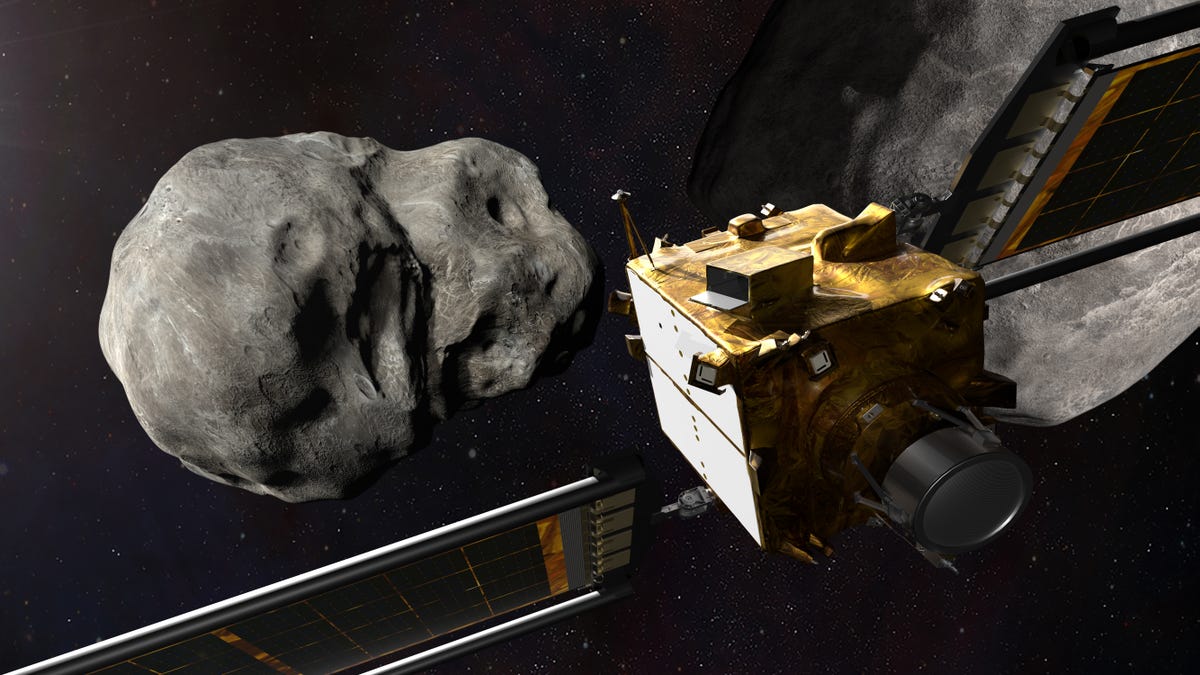See NASA asteroid-bashing mission's star-studded first images from space
Darkness and stars mark a major milestone for the DART planetary defense mission.

An illustration of the DART spacecraft.
NASA's Double Asteroid Redirection Test mission launched in November and has a long journey ahead as it aims for its ultimate goal of smashing into a moonlet around an asteroid in late 2022. It's passing some of that time by taking sightseeing pictures along the way.
On Wednesday, NASA released DART's first images from space, calling it "a major operational milestone for the spacecraft and DART team."
NASA's DART spacecraft captured this view of space and stars when it uncovered its camera on Dec. 7, 2021.
The images come from the spacecraft's Draco telescopic camera. DART opened the camera cover on Dec. 7 and -- much to the delight of scientists concerned about the camera getting jostled during launch -- the camera worked just fine.
"Taken about 2 million miles (11 light seconds) from Earth -- very close, astronomically speaking -- the image shows about a dozen stars, crystal clear and sharp against the black backdrop of space, near where the constellations Perseus, Aries and Taurus intersect," NASA said.
The Dec. 7 image isn't flashy, but it has lots of meaning for the mission. It's helped the DART team orient the spacecraft and camera to capture interesting views. That's good preparation for when DART reaches the asteroid Didymos and its moonlet Dimorphos.
NASA shared another DART image from Dec. 10 that shows a set of stars in Messier 38, known as M38 or the Starfish Cluster.
"Intentionally capturing images with many stars like M38 helps the team characterize optical imperfections in the images as well as calibrate how absolutely bright an object is -- all important details for accurate measurements when Draco starts imaging the spacecraft's destination, the binary asteroid system Didymos," the agency said.
DART is NASA's first planetary defense mission. It will test the idea that a spacecraft could nudge a potentially dangerous asteroid and change its path enough to protect Earth from impact. Didymos and Dimorphos are no threat to Earth, but are a perfect target for this experiment.
With DART's "eye" open, we can look forward to more space snaps from the brave mission.
This image from the DART spacecraft of Dec. 10 shows the stars in Messier 38, also known as the Starfish Cluster.

